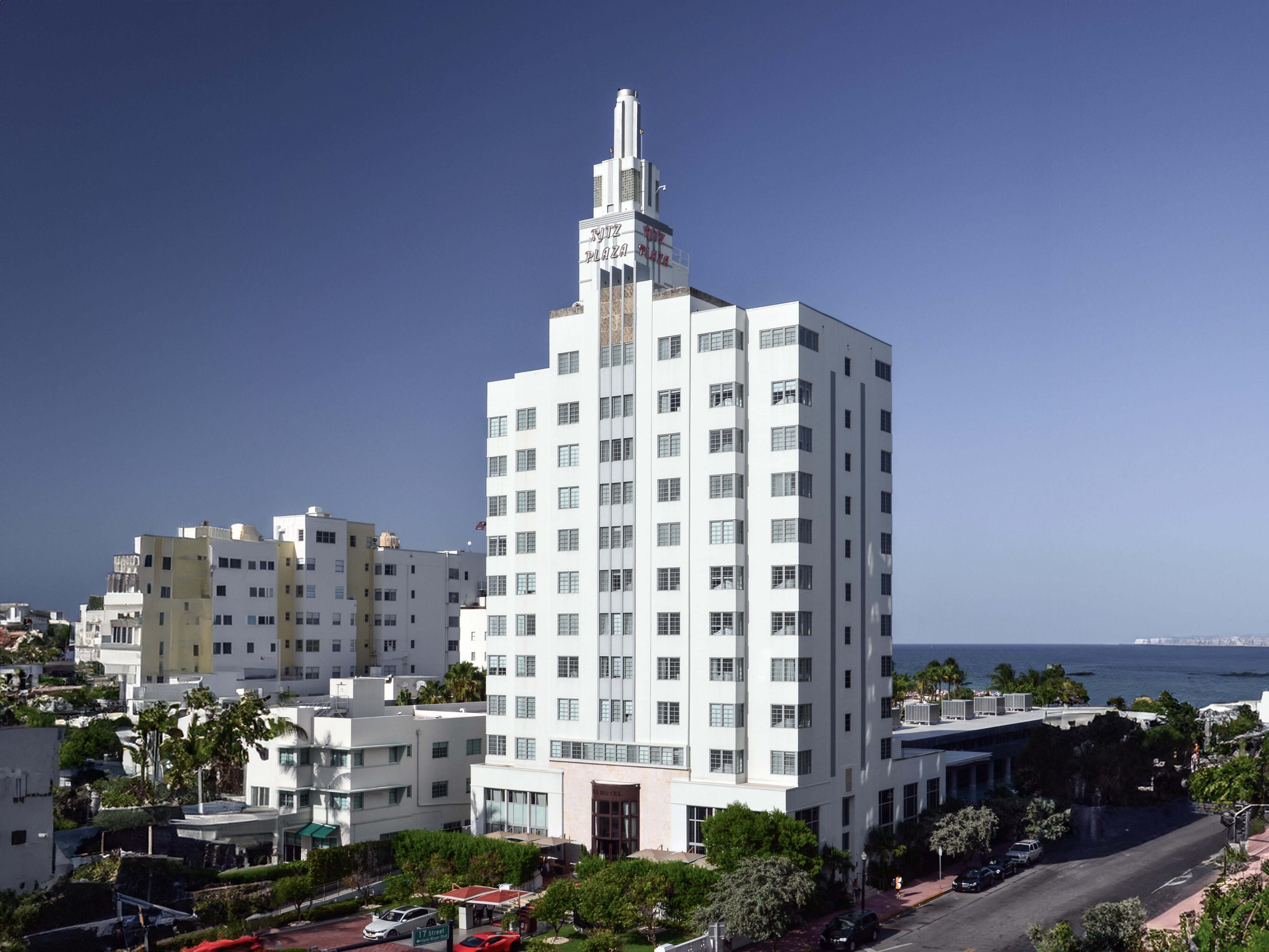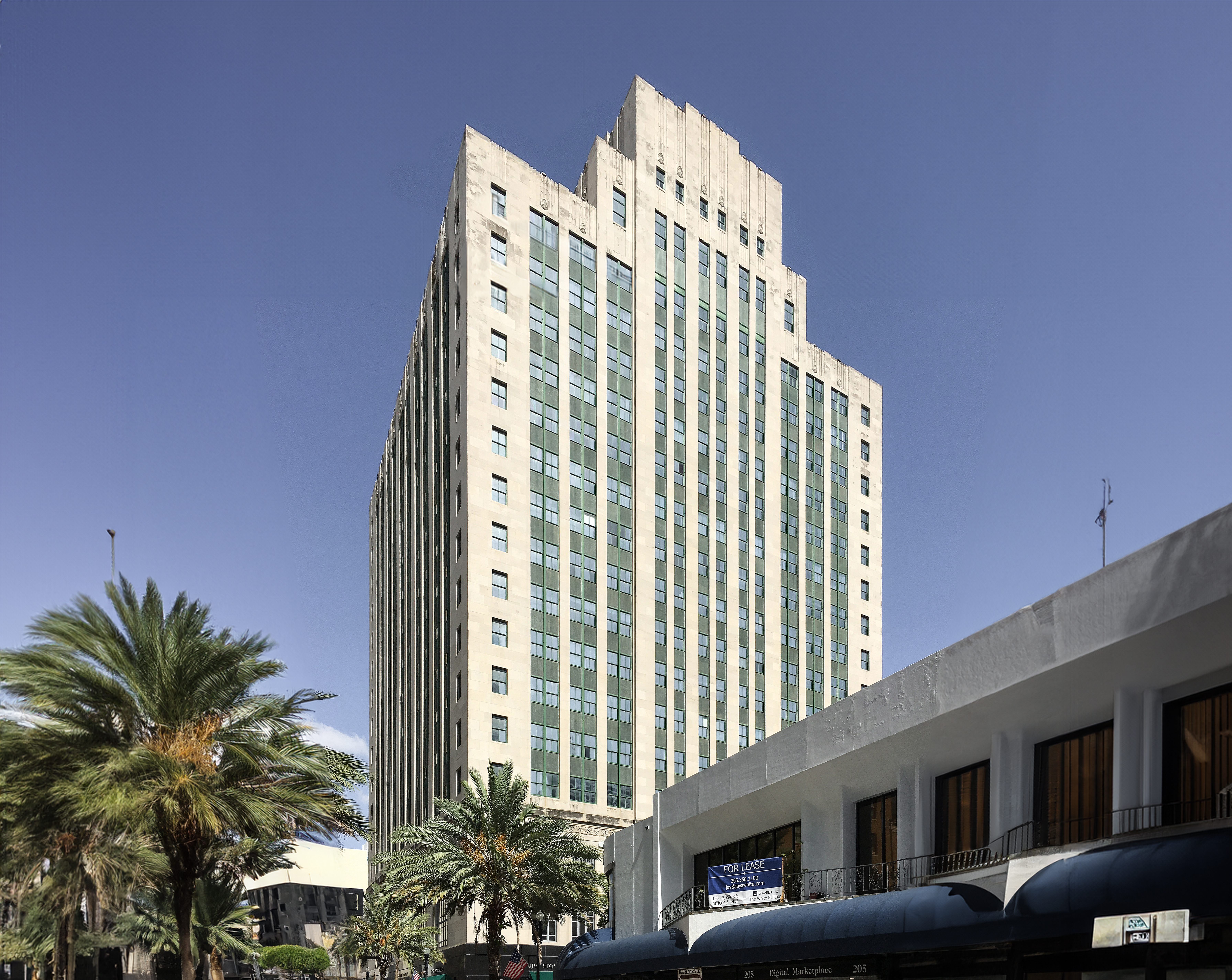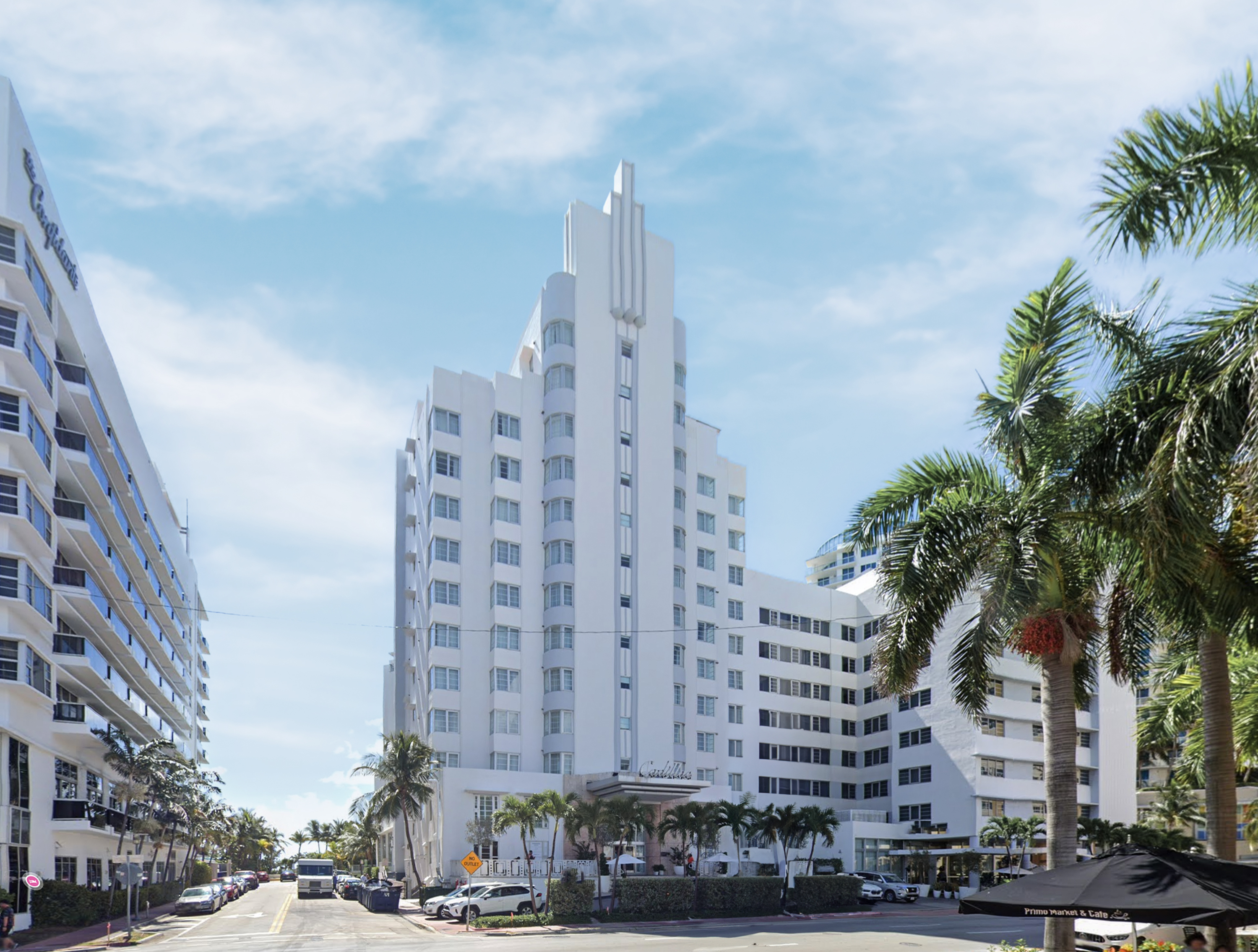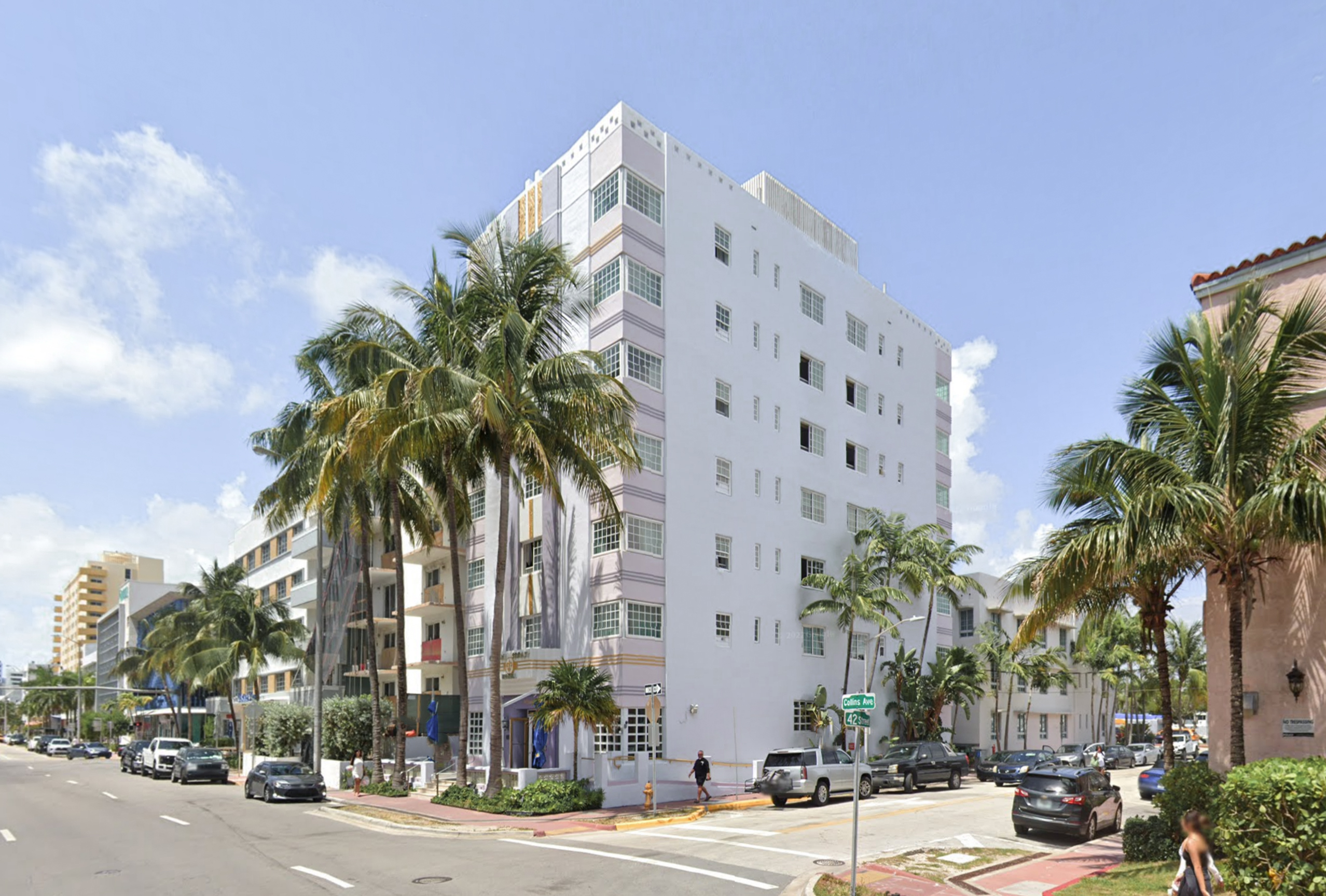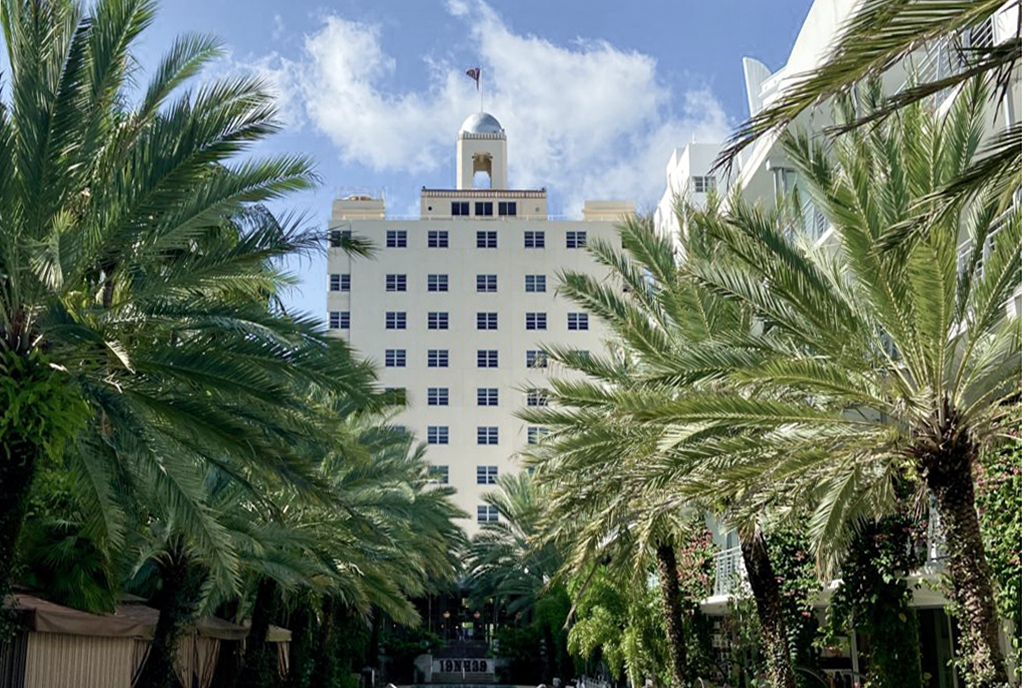The SLS South Beach Hotel is an Art-deco skyscraper designed by L.Murray Dixon, and built between 1939 and 1940 in Miami, FL.
SLS South Beach Hotel is not the only name you might know this building by though. It is common for companies to want to attach their names to iconic buildings when they move in, or for the general public to come up with nicknames, and this one is no exception. The building has changed names several times over the years, and is also known as:
- Grossinger Beach Hotel between 1939 and 1946.
- Ritz Plaza Hotel between 1946 and 2004.
- SLS South Beach Hotel from 2012 until this day.
Its precise street address is 1701 Collins Avenue, Miami, FL. You can also find it on the map here.
At the time of its completion in 1940 the SLS South Beach Hotel incorporated solutions that were quite advanced at the time, these included air-conditioned, which is taken for granted today, but the SLS Hotel was actually the first Hotel in Miami to incorporate it.
The building has been restored 2 times over the years to ensure its conservation and adaptation to the pass of time. The main restoration works happened in 1990 and 2012.
